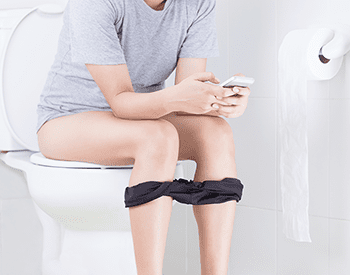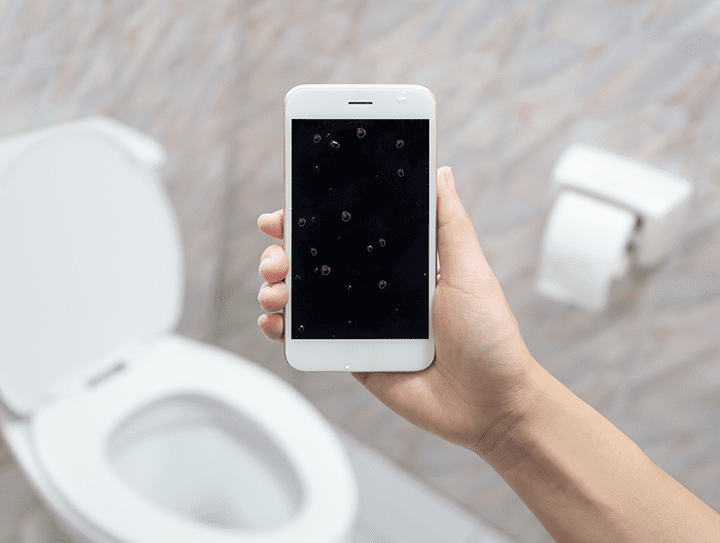You wash your hands…maybe you should clean your phone
PATIENT SAFETY AWARENESS WEEK is March 10-16, 2019. Are you aware of these facts?
- Preventable medical errors are the third leading cause of death in the United States, accounting for over 251,000 lives lost annually.
- Healthcare-acquired infections (HAIs) account for nearly 40% of those lives lost.
- Current efforts to lower the incidence of HAIs focus on device-associated infections such as those caused by central lines, catheters, and ventilators.
- A recent multistate survey indicated that device-associated HAIs accounted for only 25.6% of infections detected.
So, what’s causing the other 74.4%? Consider this question when you think about your personal approach to patient safety and what you might do to change an alarming trend: cellphone contamination.
It’s hard to go anywhere these days and not notice cellphones. Our lives are transformed by the technology, ease of use, and connectivity to others. For those of us in healthcare, apps are available for medication lookup and dosing, clinical decision-making, and on-the-spot training. Nurses in every care setting depend on access to the point-of-care tools and resources cellphones provide.
However, a dark side to cellphones may exist, especially in patient care areas. I’m an advisor to the Institute for Healthcare Improvement Open School–Fort Worth chapter, and recent work by several healthcare professions students at the University of North Texas Health Science Center was a wake-up call for me. The students wanted to determine if a link exists between cellphone contamination levels and cellphone use in restrooms, hand hygiene, and hygiene behaviors, especially since research investigating cellphone contamination rates and cleaning practices is sparse.
A survey was developed and administered to students as they exited the restroom. Then  an adenosine triphosphate luminometer was used to measure the amount of biological matter on the phone’s surface. Survey responses were compared to subjects’ cellphone contamination levels and values compared to previously established cleanliness benchmarks for healthcare environments. The methods and statistical analysis were rigorous but too lengthy to explain in an editorial, so you’ll have to trust me on this one.
an adenosine triphosphate luminometer was used to measure the amount of biological matter on the phone’s surface. Survey responses were compared to subjects’ cellphone contamination levels and values compared to previously established cleanliness benchmarks for healthcare environments. The methods and statistical analysis were rigorous but too lengthy to explain in an editorial, so you’ll have to trust me on this one.
The findings were surprising: Health professions students are using their cellphones in the restroom and washing their hands afterward, but they often neglect to clean their phones. This behavior leads to an overall cellphone contamination level that exceeds established benchmarks for healthcare surfaces by three- to 17-fold.
Now that the student pilot is complete and proof of concept is apparent, testing in patient care areas comes next. On rounds, I’m now asking nurses and other staff about how they clean their phones and if they adhere to organizational infection-prevention policies.
How about you? Do you know how dirty your cellphone is? Patient Safety Awareness Week might be a good time to talk to your infection-prevention staff about how you can make sure your phone isn’t a source of contamination affecting your patients. See what one hospital is doing by reading Wentz and Bowles’ 2018 article on this topic. If your organization provides cellphone decontamination devices, use them. Do you have a policy or process for cellphone decontamination that’s working well? Let us know and we’ll post it on myamericannurse.com.
Thank you for all you do to keep patients safe, during Patient Safety Awareness Week and all year long.

Lillee Gelinas, MSN, RN, CPPS, FAAN
Editor-in-Chief
Selected references
Magill SS, Edwards JR, Bamberg W, et al. Multistate point-prevalence survey of health care-associated infections. N Engl J Med. 2014;370(13):1198-208.
Makary MA, Daniel M. Medical error—The third leading cause of death in the US. BMJ. 2016;353:i2139.
Wentz B, Bowles MJ. Mobile devices and healthcare-associated infections. Am Nurs Today. 2018;13(9):56, 58-9.
ant3-Gelinas-205


















